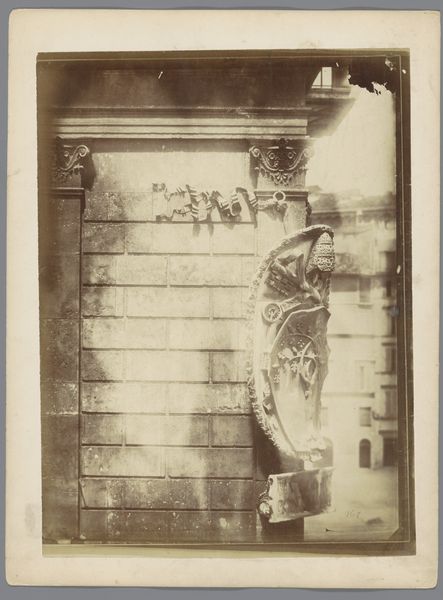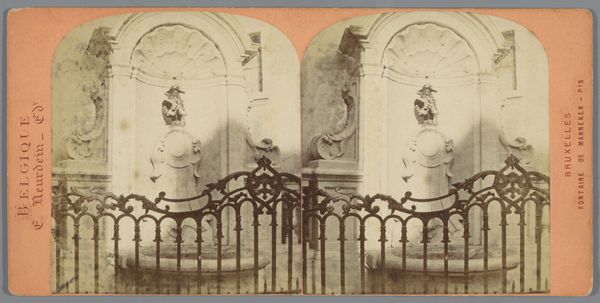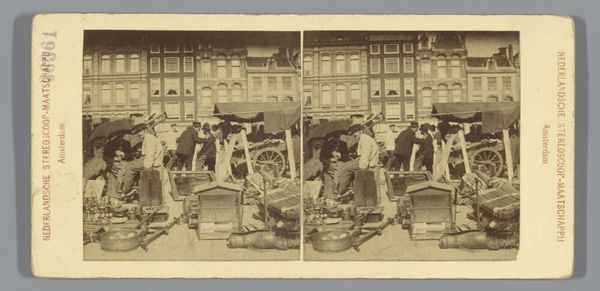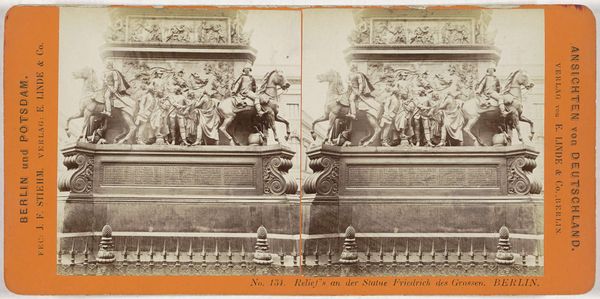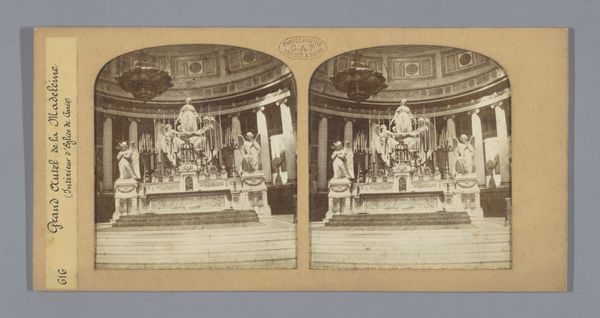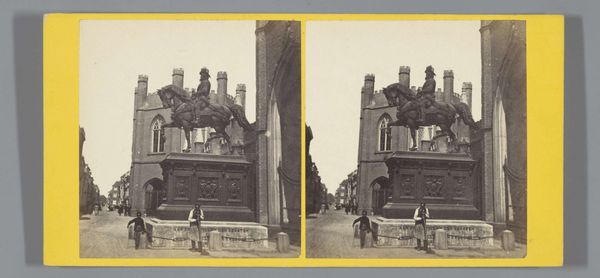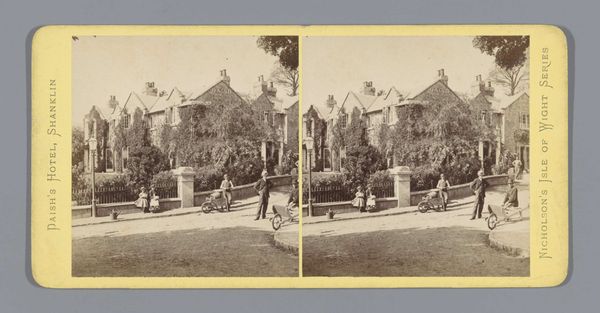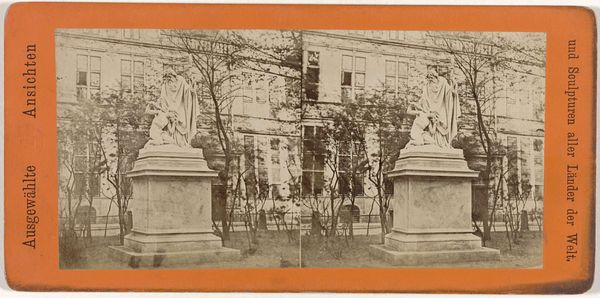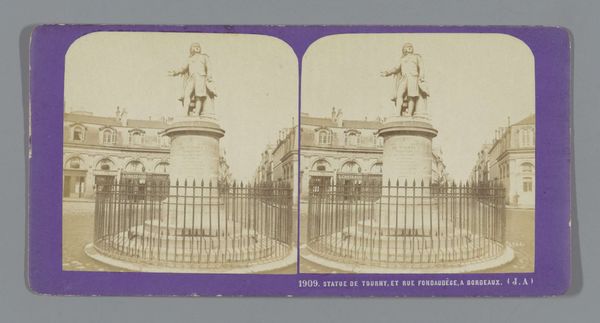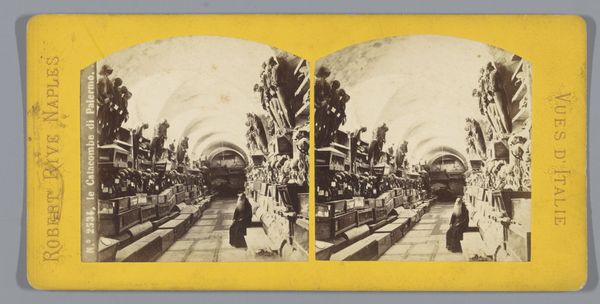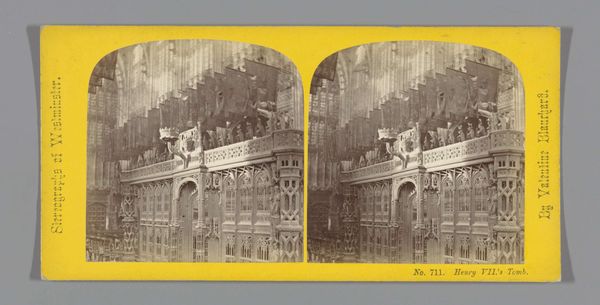
Naturalistische preekstoel van Hendrik Frans Verbruggen in de Kathedraal van Sint-Michiel en Sint-Goedele in Brussel 1866 - 1870
0:00
0:00
print, bronze, photography, sculpture, site-specific
# print
#
bronze
#
photography
#
sculpture
#
site-specific
#
realism
Dimensions: height 86 mm, width 177 mm
Copyright: Rijks Museum: Open Domain
Curator: Let's consider this stereoscopic photograph capturing Hendrik Frans Verbruggen's naturalist pulpit in the Cathedral of St. Michael and St. Gudula in Brussels, likely taken between 1866 and 1870. What are your initial thoughts? Editor: Visually arresting. The level of detail almost overwhelms you; all that bronze and seemingly bursting with plant life… it feels intensely dramatic. Curator: Absolutely. Verbruggen's pulpit is a fascinating example of how realist sculpture became a crucial aspect of identity formation. We have the natural elements combined with powerful religious allegory all playing out against a backdrop of complex 19th-century sociopolitical events in Belgium. Editor: Exactly, let’s focus on the “naturalist” designation here. This photo hints at the immense labor involved. Extracting, transporting, casting – each stage shaping our experience of it. Also I think that it reflects 19th-century tastes – realism and religious symbols mix, creating pieces for consumption in public space. Curator: Good point. It represents a fusion of styles indicative of the period but beyond its stylistic merits, it acted as a crucial signifier of civic pride. Think of the craftsmanship as contributing to the solidification of cultural values during that transformative period in Brussels’ history. The photographic circulation too furthered this impact. Editor: And those reproductions! Photography made this extravagance accessible beyond the Cathedral's walls. Mass dissemination created accessibility on scales hitherto impossible to be achieved. Also to highlight an aspect: that even something which we think is part of a church's unchanging story may evolve depending on circumstances: political, commercial. Curator: A tangible manifestation of faith made both publicly accessible and photographically reproducible. Quite the historical layering, indeed! Editor: In conclusion it is clear the pulpit serves as an aesthetic object, while acting as a reminder of the various sociohistorical forces influencing its very creation. Curator: Agreed. Artworks like these continuously reflect societal narratives which photography captures and perpetuates for new readings to come.
Comments
No comments
Be the first to comment and join the conversation on the ultimate creative platform.
